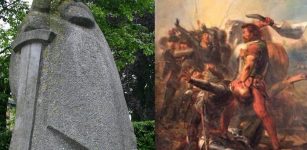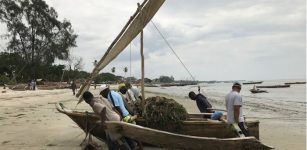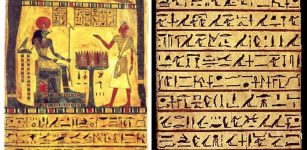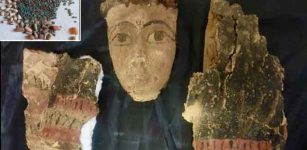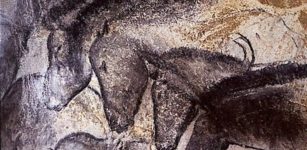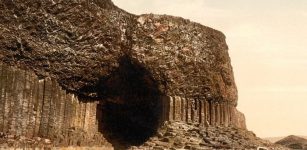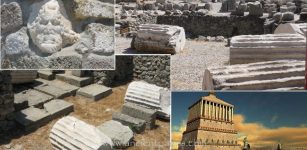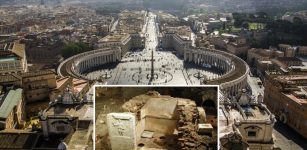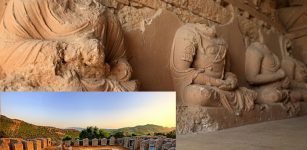Magnificent Ancient Treasures Of The Mysterious Kangju Kingdom Found By Archaeologists
Jan Bartek - AncientPages.com - Between the 4th century BC and the 3rd century AD, a kingdom known as the Kangju Kingdom existed in Central Asia. This kingdom was inhabited by a semi-nomadic population of Indo-European descent. Archaeological findings indicate that the Kangju people were skilled craftsmen who maintained diplomatic connections with the outside world. Their artifacts and remains provide insights into their craftsmanship and interactions with other civilizations during that era.
The approximate territory of the Kangju. Credit: Thomas Lessman - CC BY-SA 3.0
Archaeologists conducting excavations in the Turkistan region of southern Kazakhstan have uncovered a trove of ancient artifacts dating back around 2,000 years. The significant finds include gold jewelry, arrowheads, and a large bronze mirror.
Experts attribute these artifacts to the era of the Kangju state, a powerful, mysterious ancient civilization that once ruled the region. Officials from the Turkistan regional government have highlighted that these discoveries demonstrate the advanced level of craftsmanship prevalent during that time. Historical records indicate that the Kangju state engaged in trade with ancient Rome, ancient China, and the Kushan Empire to the south, facilitating cultural and economic exchange.
Archaeologists excavated the Tolebaitobe burial ground, where they uncovered three ancient graves. Credit: Ozbekali Zhanibekov South Kazakhstan Pedagogical University
According to the team from Ozbekali Zhanibekov University and local government archaeologists, two of the three burial mounds they examined had been previously looted. Still, the third mound remained intact, revealing a wealth of artifacts that provide valuable insights into the advanced craftsmanship and extensive trade connections of the ancient Kangju state. The burial mounds are located in Turkistan’s Ordabasinsky district, the researchers write in a press release .
One of the most notable discoveries was a bronze mirror believed to have originated from China during the Han dynasty, which spanned from 206 B.C. to 220 C.E. The circular mirror features a distinctive eight-sided arched design on the back and a central hole for threading. Similar mirrors have been found across Eurasia, including in Afghanistan and the southern Ural region.
Reconstruction of a Kangju woman, 2nd-century BCE-4th century CE (), by archaeologist A.N. Podushkin. Central State Museum of Kazakhstan. Credit: Public Domain
Remarkably, this particular mirror was unearthed from the grave of a high-status woman, indicating her wealth and influential position in society at that time. This find underscores the far-reaching trade networks and cultural exchanges that existed during the ancient Kangju era.
2,000-year-old gold earrings. Credit: Ozbekali Zhanibekov South Kazakhstan Pedagogical University
A close-up view of the gold jewelry found at the site. Credit: Ozbekali Zhanibekov South Kazakhstan Pedagogical University
The circular bronze mirror found in the ancient burial. Credit: Ozbekali Zhanibekov South Kazakhstan Pedagogical University
The unearthed earrings from the archaeological site are particularly ornate and intricately crafted. They are made from a colorful alloy known as "polychromatic" gold and adorned with turquoise and rubies, adding to their vibrant appearance. The earrings are shaped like a crescent, symbolizing the moon, with additional decorations resembling grape clusters, designed to catch and reflect sunlight.
See also: More Archaeology News
Aleksandr Podushkin, the expedition leader and an archaeologist at Ozbekali Zhanibekov University, explained that the Kangju state was a coalition of various peoples, including nomadic tribes such as the Sarmatians, Xiongnu, and possibly the Scythians known as the Saki. He further stated that the positioning of Kangju cities along segments of the Great Silk Roads, connecting China to the Mediterranean, allowed them to establish diplomatic ties and engage in trade across the ancient world.
The many finds, including these ornate earrings, are now planned to be exhibited at the National Museum in Kazakhstan's capital, Astana. This will allow the public to appreciate and learn about this significant archaeological discovery.
Written by Jan Bartek - AncientPages.com Staff Writer







